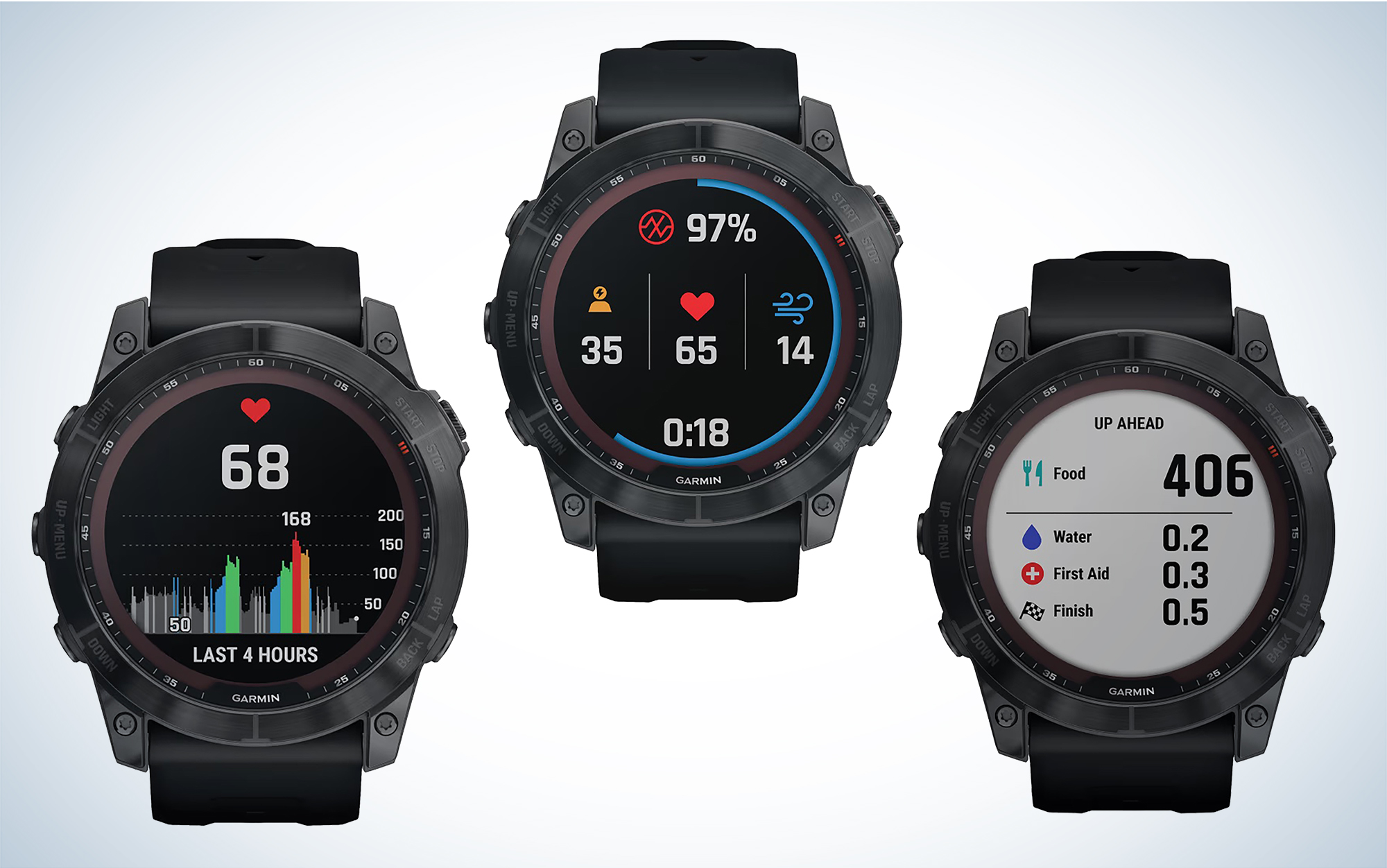KeyMod vs M-Lok: A Deep Dive Into the Best Rail Interface

The KeyMod vs M-LOK debate isn’t really much of a debate anymore. It’s clear that M-LOK — the rail interface system used for mounting accessories, and introduced in 2014 — is the go-to option of today and tomorrow.
Even if you agree the argument is settled, it’s still an interesting bit of gun history that, at this point, should be preserved for future generations who may find a rusty old handguard in a pile of unused parts and wonder what those weird keyholes are for. In the war of KeyMod vs. M-LOK, just as in the war between VHS and Betamax, there was a winner and a loser.
It’s pretty safe to say that the KeyMod handguard system will be joining the Laserdisc, the HD DVD, and the MiniDisc on the pile of ideas that worked well for a while, but just couldn’t cut it against a slightly better competing technology. Still, there are a fair number of KeyMod options out there, and VLTOR is still cranking out handguards, so it’s worth knowing the pros and cons of each system.
But before we could even get into the attachment slot war, the idea of a standardized firearm attachment system had to be developed and take root — no easy task in an industry with manufacturers all over the world turning out countless firearm models.
It all started with the military and its need to attach an increasing amount of stuff to M16s and M4s that had a lot of unused handguard real estate. And, in the end, it was the military that determined the winner of the M-LOK vs. KeyMod.
The Key Differences Between KeyMod and M-LOK
M-LOK Specs
- Slot Shape: Rectangular with rounded corners
- Slot dimensions: 7 x 32 mm
- Corner Radius: 2.38mm
- Slot Interval: 8mm
KeyMod Specs
- Slot Shape: keyhole with a circle and slot
- Hole Diameter: 0.380 inches
- Slot Width: 0.234
- Slot Interval: 0.788 inches between hole centers
Depending on who you ask, some will say that M-LOK accessories are certain to fit since the rectangular slots are more forgiving, while there can be some problems with KeyMod fitment if anything is a bit out of spec.
Additionally, while companies can license the use of M-LOK free of charge, it isn’t open source. That means accessory makers and gunmakers still have to acquire a license from Magpul to use the M-LOK standard. One can assume this gives Magpul more control in making sure specs are consistent.
And yeah, there’s really no denying that the simple, minimalist M-LOK slots just look better on any firearm and getting an array of accessories to fit just right is way easier. But the real difference is strength.
By 2017, a number of companies were producing M-LOK handguards and accessories, including rail segments and products like vertical foregrips, bipods, sling mounts, and tactical lights that attached directly to M-LOK slots without the need for a rail, reducing the number of parts, and keeping the accessory closer to the handguard, reducing profile.
That year, U.S. Special Operations Command (SOCOM) did some testing to see which system they wanted to use. The M-LOK system reportedly outperformed KeyMod across the board through drop tests and failure load testing.
Since then, special forces began using M-LOK as the preferred mounting method. Word spread to both the firearm industry and gun owners, and while KeyMod still has some fans thanks to its ease of use, it generally seems shooters have settled on M-LOK. You’ll find those little rectangles on everything from PRS rifles to tactical carbines to shotguns.
It’s sturdy and reliable enough to attach accessories like bipods and foregrips that will absorb a good amount of weight and torque while also being backward compatible with generations of Picatinny rail accessories, because while direct M-LOK accessories are the hotness, you can always attach a rail segment to an M-LOK slot.
Plus, those slots don’t get in the way when they’re not doing anything, and they look pretty cool. And KeyMod, while still a fine system, is well on its way to becoming the BetaMax of gun accessory attachment systems. After all, you can still get attachments that are M-LOK or made for Pic rails, but KeyMod is hardly ever an option.
Riding the Rails: Picatinny vs. Weaver
In the beginning — the primordial days of gun ownerships — attaching accessories to a firearm almost always meant drilling and tapping holes in your gun, clamping things, and adding custom holes with bolts and washers that were spray-painted black. Or, at the very least, dealing with dovetails even to simply attach a riflescope.
The good thing about this era was that gunsmiths had a bunch of small, regular jobs to keep them in business when gun owners weren’t bubba-ing their own solutions.
But, on the down side, that barrier made most gun owners a little hesitant to make modifications. Not to mention customizing a gun in permanent ways could kill its resale value.
For a long time, the world of AR-platform firearms was no different. The original M16s and civilian ARs came with a two-piece synthetic triangular handguard that wasn’t built to hold accessories and kind of shook around no matter how tight that delta ring was on there. Then came the round handguards, but they were made the same way. On top of the receiver, there was a carry handle with a hole in it that was used to mount optics of various types, but it was pretty high and not ideal for the era’s optics.
Then, the popularity of rails changed everything — and they’re older than you probably think.
The Weaver Rail system was introduced in the 1930s as a universal mounting solution, mostly for rifle scopes, but for other accessories as well. It was a rail with a series of slots with a distinctive cross-slot setup. It did the job, and while it became popular in the civilian gun world, it wasn’t widely adopted by the military.
The Picatinny rail system, officially called the MIL-STD-1913 rail was created in the 1990s to solve the problem of attaching an increasing number of required accessories to military M16 rifles, and then M4 Carbines, which entered service in 1994. Today, you’ll also see it referred to as the STANAG 4694 Nato Accessory rail, a term that was official adopted in 2011. The STANAG 4694 is backwards compatible with the MIL-STD-1913 rail, but has tighter tolerances.
This new slotted rail, named for the Picatinny Arsenal in New Jersey where it was developed, is fairly similar to the Weaver rail, but it was standardized. The slots were all exactly 0.206 inches apart, whereas weaver slots were about 0.180 – but that “about” is a big deal when you’re trying to get a multi-slot accessory to lock in.
As a result, the Picatinny was adopted by the military for its infamous quad-rail handguards for its AR-platform firearms, and law enforcement soon followed suit. Today, Pic rails are still everywhere and on every gun from pistols to rifles to shotguns. You’ll see Weaver rails every once in a while, mostly on rimfire long guns and older firearms, but the Pic rail has largely replaced it.
Even still, you don’t see as many new guns with long, integrated rails anywhere except atop the receiver for optics. That’s because a better system came along — two actually.
KeyMod Comes Along
Rails were great, but they presented some problems. A short integrated rail section on top of a receiver for a scope base is fine, because where else is a scope going to go? But along a handguard of a long gun, accessories have different ideal placements depending on what they are and what they’re meant to do.
So, in 2012, VLTOR Weapon Systems from Arizona created the KeyMod modular rail interface system for firearm components. It was released by Noveske Rifleworks of Oregon before the pattern was published open source in the public domain so the entire firearms industry could use it.
Unless you’re running a full early-2000s U.S. Army M4 accessory kit, most of the space on an aluminum handguard with a full-length rail at 12, 3, 6, and 9 o’clock goes unused. It’s great to be able to position a mount (almost) anywhere you want, but all that wasted rail adds unnecessary weight and the slots tend to tear up gloves or skin if left uncovered. There are entire product lines addressing this — rubberized ladders and such that you cut to fit blank rail space.
The KeyMod system let gun owners put rail sections anywhere they wanted on a handguard that was covered with keyhole-shaped slots instead of rails without removing it from the gun. So, if you wanted a flashlight mount near the muzzle on the left side of the gun, you just put a six-slot Pic rail section with KeyMod nuts right where you need it, and then attach your light as normal. Boom. No extra rails, no wasted weight or space.
Additionally, a handguard can have slots at 45-degree positions along the length of the handguard allowing for more ideal accessory placement — plus, all those slots only help the barrel cool better.
The KeyMod system is dead-easy to use: put the KeyMod nuts into the slots on the accessory you want to attach, being careful to orient them the correct way, because the screw holes aren’t centered. Then, get your screws started. Place the rail section in the correct position with the KeyMod nuts in the holes, and then push forward so they’re pressed into the front of the slot. Then, tighten down the screws and the nuts tighten against the other side of the handguard. That’s it.
But the system is far from perfect. When you first see a handguard full of those funny shaped slots it doesn’t look cool, and let’s be honest, that’s a big deal for people who are all about customizing ARs.
For this system to work, the spacing of the holes, and consequently the screwholes on a given accessory, had to be exact. And they weren’t always so, as the gun industry was still getting used to a universal attachment system. Plus, cheap rail sections with lousy quality control soon hit the market like a tidal wave.
Magpul Drops MOE System Followed by M-LOK

A good idea doesn’t stand alone for long. Magpul began as an AR magazine accessory company and eventually bloomed into one of the most trusted and prolific firearm accessory companies around, took a stab at a universal mounting system in the 2000s.
Their system was called the MOE (Magpul Original Equipment) and it worked kind of the same way as KeyMod, but it had a huge drawback. It required the installer to manually attach the nut to the bolt while it was inserted into the slot. That meant you couldn’t use MOE to attach something to a free-float handguard without taking the handguard off the firearm. That’s a big problem.
Realizing this was a dealbreaker, Magpul introduced the M-LOK attachment system in 2014 as a replacement. The M-LOK system uses rectangular slots and a T-slot nut that can only rotate 90 degrees, which allows it to attach to a handguard just like a KeyMod accessory, but without the need to push it forward, making placement and fit a bit more exact.
More than that, accessories can be mounted either within a slot or bridging multiple slots. That means the position of an accessory can be adjusted in intervals along the length of a slot.
Using the M-LOK system is about the same as using KeyMod, but it can take a little getting used to. If you thread the M-LOK nut onto the screw just the right amount, when you put it through the slot, it will lock in and tighten with a couple turns of the screw. If you don’t thread it on enough, it will spin and spin. Because of this, you’ll find people on Reddit and Quora who think — facing much ridicule in the process — that you have to remove a handguard to use M-LOK.
However, once you get an M-LOK rail or accessory set up, you just have to give the screws a quarter turn to orient the nut so the accessory can be removed. M-LOK screws also come with a bit of blue Loctite on the threads, making them ready to attach precision equipment like bipods or optic mounts.
Magpul had great timing with M-LOK. LED tactical weapon lights had finally become small and powerful enough to be considered indispensable accessories. The same goes for laser sights and other tech. LPVOs became more affordable than ever, along with other optics. Plus, the market was filled with robust, lightweight polymer attachments of every shape and size, from angled foregrips to hand stops.
They all needed a reliable and universal way to attach to firearms.
Final Thoughts on KeyMod vs M-LOK
One could make a good argument that the M-LOK system has greatly contributed to the overall popularity growth of tricking out ARs. All those empty slots have a way of calling to a person, teasing out endless possibilities. After all, it’s so easy to attach anything exactly where you want it. Shooters from the 1960s would scoff, and the old-timers who are still around today usually do, but deep down, they’re just jealous.
Read the full article here







